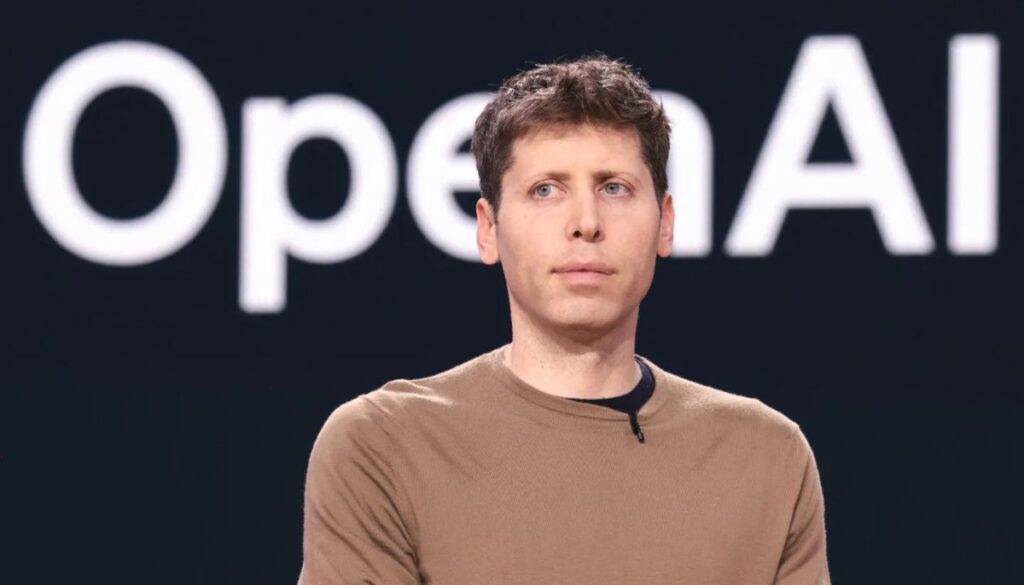The OpenAI Microsoft Antitrust most valuable technology company in the world isn’t Google or Apple it’s OpenAI, the architect of the generative AI boom. But the incredible velocity of its rise, culminating in an estimated $500 billion valuation , forced a profound and highly publicized corporate metamorphosis. As of late 2025, OpenAI has successfully moved forward with a new business structure, finalizing its conversion into the OpenAI Group Public Benefit Corporation (PBC). This move, done in concert with a dramatic restructuring of its partnership with Microsoft, represents a strategic untangling designed to appease global regulators who had raised serious alarms over market concentration.
The Paradox of Mission and Money
How OpenAI Microsoft Antitrust can a single organization simultaneously be one of the world’s most valuable commercial ventures and one of its wealthiest philanthropic entities? That’s the paradox OpenAI now embodies.
The updated structure, finalized in October 2025, confirmed that the nonprofit, now dubbed the OpenAI Microsoft Antitrust Foundation, retains control of the for-profit OpenAI Group PBC. Unlike traditional companies, the PBC status legally requires the company to advance its stated mission ensuring Artificial General Intelligence (AGI) benefits all of humanity alongside its commercial success.
Crucially, OpenAI Microsoft Antitrust the Foundation now holds equity in the PBC valued at approximately $130 billion, making it one of the best-resourced philanthropic organizations globally. This immense wealth is earmarked for two primary charitable areas: accelerating health breakthroughs and funding technical solutions for AI resilience. This mechanism, while innovative, creates an intrinsic tension: the Foundation must prioritize the aggressive commercial growth of the PBC to maximize its own philanthropic funding pool. As critics point out, this makes the nonprofit’s control potentially “illusory,” suggesting the commercial engine might ultimately dictate the charitable direction.
OpenAI Microsoft Antitrust further complicating this delicate balance is the ongoing legal challenge brought by co-founder Elon Musk, who accuses the company of betraying its original non-profit mission. Although a federal judge denied Musk’s request to block the PBC conversion, a trial to consider his core claims of mission betrayal and unjust enrichment remains on the docket for March 2026.
Strategic Untangling: The Microsoft Reset
The OpenAI Microsoft Antitrust most significant change, however, was the dramatic reworking of the alliance with its largest investor, Microsoft. The initial partnership, which granted Microsoft exclusive compute rights, was widely seen by watchdogs as creating a market chokepoint, drawing intensive antitrust scrutiny from the FTC, the European Commission (EC), and the UK’s Competition and Markets Authority (CMA).
In response, the two titans executed a formal strategic untangling. While Microsoft maintains a 27% stake, valued around $135 billion , the deal removed Microsoft’s former right of first refusal to be OpenAI Microsoft Antitrust‘s sole compute provider. This gives OpenAI the operational independence it needs to compete globally, including serving government clients and working with rival cloud providers like CoreWeave and Google.
The OpenAI Microsoft Antitrust evolution of the partnership, trading a fragile legal protection for a robust financial guarantee, is striking:
Partnership Evolution: Before vs. After Recapitalization
| Key Partnership Element | Pre-Recapitalization (Exclusive Era) | Post-Recapitalization (October 2025) |
| Microsoft Stake | Higher (e.g., 32.5%) | 27% (Valued at $135B) |
| Azure Compute Requirement | Exclusive/Right of First Refusal | Non-exclusive; OpenAI commits to $250B incremental spend |
| OpenAI Operational Freedom | Limited ability to work with rivals | Can utilize other cloud providers, release open-weight models |
This move provides long-term revenue visibility for Microsoft while locking in a massive $250 billion commitment from OpenAI for incremental Azure services. Although OpenAI Microsoft Antitrust is now free to use other pipelines, Microsoft’s remains overwhelmingly dominant, ensuring the alliance is “future-proofed”.
The Compute Chokepoint Under Fire
Despite the CMA closing its initial merger inquiry in March 2025 , the focus of regulators and legal action has shifted from corporate structure to corporate conduct. Antitrust bodies are now scrutinizing strategic alliances where one party controls “critical inputs like cloud infrastructure”.
The OpenAI Microsoft Antitrust most tangible legal threat comes from a consumer class action filed in October 2025. Plaintiffs allege that Microsoft engaged in anti-competitive conduct by using its prior exclusive control over Azure to restrict compute supply, thereby artificially inflating ChatGPT subscription prices by up to 200 times those of competitors. They describe Microsoft’s historical influence as remaining “like a sword of Damocles over OpenAI wielded by one of its principal competitors”.
This lawsuit tests a crucial theory: can control over cloud compute capacity serve as an anti-competitive “chokepoint” that harms consumers? Microsoft maintains that the partnership “promotes competition, innovation, and responsible AI development”.
As OpenAI Microsoft Antitrust achieves the operational freedom necessary to pursue AGI development and build the “AGI economy” , its carefully calibrated corporate structure will be continuously tested. With 72% of U.S. adults harboring major doubts about AI and demanding oversight , regulatory intervention is inevitable. The long-term implication is clear: the outcome of the current antitrust actions will shape how courts and regulators view exclusivity arrangements worldwide, determining whether the competitive landscape of the 21st century’s foundational technology remains open or becomes concentrated in the hands of a few compute giants.

